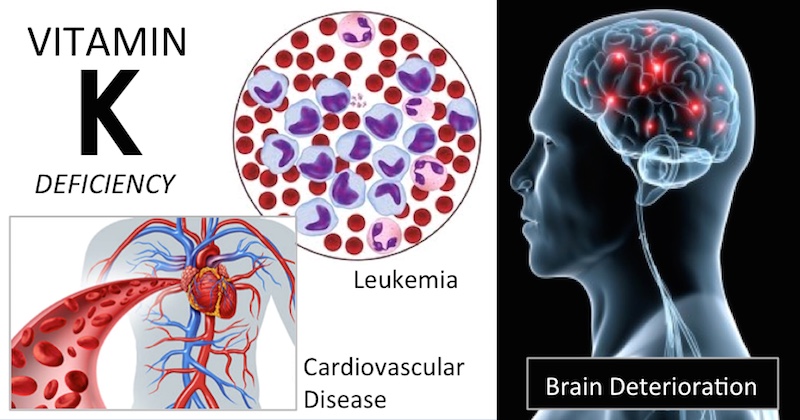Meet This Very Important Blood-Clotting Vitamin That Prevents Dementia
Last updated on
Many people don’t know that there is a vitamin that is just as important to your body as vitamin D, but is often overlooked. Very few people maintain the proper recommended amount, simply because no one knows about it, or how they can increase their levels.
Well, that’s all about to change.
What Is Vitamin K
Vitamin K is a fat-soluble vitamin that is most known for the role it plays in blood clotting. Vitamin K is also essential in building strong bones, preventing heart disease, and crucial part of other bodily processes. Researchers say that nearly everyone is deficient in vitamin K. Most people do not get enough in their diet to maintain adequate blood clotting.
Dangers Of Vitamin K Deficiency
- Arterial Calcification
- Cardiovascular disease
- Varicose disease
- Brain health problems
- Osteoporosis
- Tooth decay
- Prostate cancer
- Lung cancer
- Liver cancer
- Leukemia
- Infectious diseases
Types Of Vitamin K
Vitamin K1: Is found naturally in plants and especially green vegetables. It goes directly into your liver and helps maintain healthy blood clotting.
Vitamin K2: Made by bacteria that line your gastrointestinal tract. K2 goes straight into your blood vessel walls, bones and tissues other than your liver.
Vitamin K3: Is a synthetic form. It is important to note that this form is not recommended and may cause toxicity in infants.
The most highly recommended form of Vitamin K, is vitamin K2. This is because it is completely natural and not toxic to the body. It is made by your body and also produced by fermented foods. It is essentially a superior from of Vitamin K.
Food Sources of Vitamin K2
- Fermented foods
- Dark green vegetables
- Natto
- Raw dairy products
- Whole egg mayonnaise
- Chicken
- Dark meat turkey
- Lamb
- Duck
- Beef liver
- Miso
More About Vitamin K
Vitamin K2 Prevents Osteoporosis
A number of Japanese studies show that K2 completely reverses bone loss. Vitamin K2 serves a biological adhesive that helps plug calcium and other important minerals into your bone matrix.
Prevents Cancer
A number of studies show that Vitamins K1 and 2 are effective cancer fighters. Consider one study published in the International Journal of Oncology, which found that treating lung cancer patients with vitamin K2 slowed the growth of cancer cells and previous studies have shown its benefits in treating leukemia.
Fat-Soluble
This is extremely important because dietary fat is necessary for the absorption of this vitamin. Therefore, in order for your body to absorb vitamin K effectively, you need to eat some fats along with it.
Who Needs It?
- Those who have a history of osteoporosis or heart disease.
- If you maintain low veggie diet.
- Eating a poor or restricted diet.
- If you have; Crohn’s disease, ulcerative colitis, celiac disease, liver disease.
- If you are taking certain broad-spectrum antibiotics, cholesterol drugs or aspirin.
How Much Vitamin K Do You Need?
The recommended daily dosage is between 44-185 mcg for adults. You must use caution with higher doses if you are on any medications. Stay under 150 mcg daily for the best and safest results.
Cautionary Note
If you are a pregnant or nursing mother, you should avoid taking K2 supplements higher than 65 mcg.
Additional Health Benefits
- Vitamin K2 deficiency may be a contributing factor to Alzheimer’s disease, and vitamin K2 supplementation may help prevent it.
- Vitamin K2 improves insulin sensitivity.
- Topical vitamin K application may help to reduce bruising.
- Vitamin K may have antioxidant properties.
Reference:
https://articles.mercola.com/sites/articles/archive/2004/03/24/vitamin-k-part-two.aspx
Some of the links I post on this site are affiliate links. If you go through them to make a purchase, I will earn a small commission (at no additional cost to you). However, note that I’m recommending these products because of their quality and that I have good experience using them, not because of the commission to be made.
Comments
Leave a Reply



































 JOIN OVER
JOIN OVER
Thanks alot, can you inform me more about zinc, its important and source please